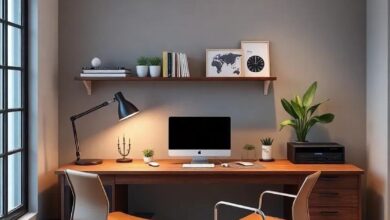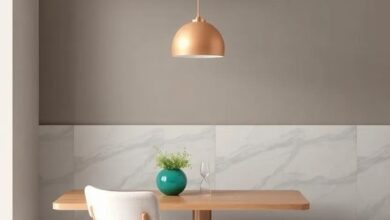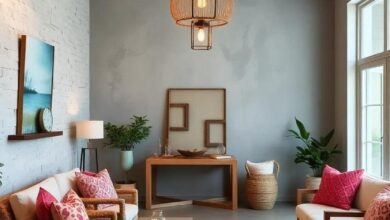
Transform Your Living Room: Embracing Biophilia with Indoor Plants
In the hustle and bustle of modern life, our living spaces ofen become mere collections of furniture and decor, devoid of the soothing touch of nature. Yet, the concept of biophilia invites us to reconnect with the natural world, transforming our homes into serene sanctuaries. In this exploration of “,” we delve into the art and science of incorporating greenery into our everyday environments. From vibrant potted plants that breathe life into corners to cascading vines that soften harsh lines, indoor plants not only enhance aesthetic appeal but also promote well-being and harmony. Join us as we uncover practical tips, design inspiration, and the myriad benefits of inviting nature indoors, creating a living room that nourishes both the spirit and the senses.
Embracing Nature Indoors for a Harmonious Living room Experience

creating a serene and balanced atmosphere in your living room can be effortlessly achieved through the incorporation of indoor plants. These green companions not only enhance the aesthetic appeal of your space but also promote well-being by improving air quality and reducing stress levels. Consider integrating a variety of plants with differing shapes and sizes to add dimension and vitality. Succulents, ferns, and flowering plants can coexist beautifully, inviting the essence of nature to your intimate living space. Try arranging them on floating shelves, coffee tables, or window sills to maximize visual interest.
To ensure your indoor garden thrives, pay attention to the specific needs of each plant. Here is a basic guide to help you get started:
| Plant Type | Light Requirements | Watering Frequency |
|---|---|---|
| Aloe Vera | Bright, indirect light | Every 2-3 weeks |
| Spider Plant | Moderate indirect light | Once a week |
| Pothos | Low to bright indirect light | Every 1-2 weeks |
By carefully choosing plants that align with your living roomS natural light, you can create a sustainable indoor ecosystem that flourishes over time. Add decorative pots and planters to enhance the look and feel, seamlessly blending nature with your unique interior design style.
The Benefits of Biophilic Design in Enhancing Home aesthetics

integrating biophilic design into your living room not only elevates its aesthetics but also nurtures a deeper connection with nature, fostering a serene ambiance. By incorporating indoor plants, you can transform a mundane space into a vibrant oasis. Consider the visual diversity offered by various foliage shapes, sizes, and colors, which can be arranged in striking displays. Opt for hanging planters, shelves filled with greenery, or even a living wall to create a multi-layered look, enhancing your room’s depth and interest.
Moreover, the benefits extend beyond beauty.Surrounding yourself with nature has been scientifically shown to reduce stress and improve mood, turning your living room into a sanctuary of comfort. enhance this experience by adding natural materials like wood or stone for furniture and décor. In doing so,you not only create a unified design aesthetic that celebrates the beauty of nature but also foster a positive living environment conducive to relaxation and creativity. Here’s a simple comparison of some popular indoor plants that amplify aesthetics and improve air quality:
| Plant | Aesthetic Appeal | Air Quality Betterment |
|---|---|---|
| Snake Plant | Striking vertical lines | Removes toxins: formaldehyde, xylene |
| Pothos | Lush trailing vines | Filters indoor air pollutants |
| Peace Lily | Elegant white blooms | Reduces benzene, carbon monoxide |
| Fiddle Leaf Fig | Bold, sculptural leaves | Improves humidity levels |
Choosing the Right Indoor Plants to Elevate Your Living Space
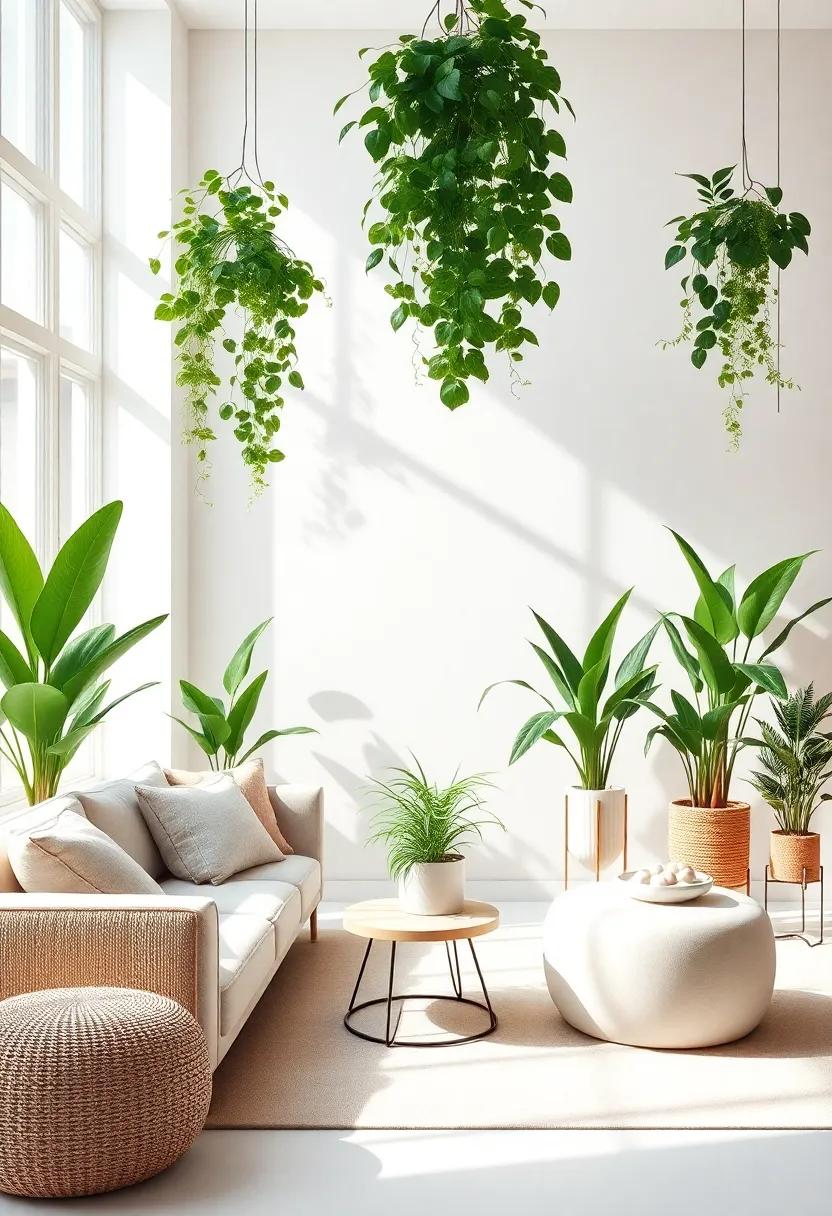
Integrating indoor plants into your living space not only enhances the aesthetic appeal but also improves air quality and boosts your mood. When selecting the right plants,consider factors such as light levels,humidity,and maintenance requirements. A variety of plants can thrive under different conditions, so assess your environment. some excellent choices for low-light areas include:
- Snake Plant: Tolerates neglect and low light.
- ZZ Plant: Known for its waxy, dark green leaves and resilience.
- Pothos: versatile and can trail or climb, doing well in various lighting.
If your living room is bathed in natural light, you might opt for varieties that are more demanding.Consider the following plants for a statement-making display:
- Fiddle Leaf Fig: A stunning centerpiece with large leaves.
- Bird of Paradise: Adds a tropical vibe with its striking foliage.
- Rubber Plant: Features dramatic leaves and grows well indoors.
| Plant Name | Light Requirements | Care Level |
|---|---|---|
| Snake Plant | Low to Bright Indirect | Easy |
| Fiddle Leaf Fig | Bright indirect | Moderate |
| Pothos | Low to Bright Indirect | Easy |
Creating a Lush Focal Point with Statement Houseplants
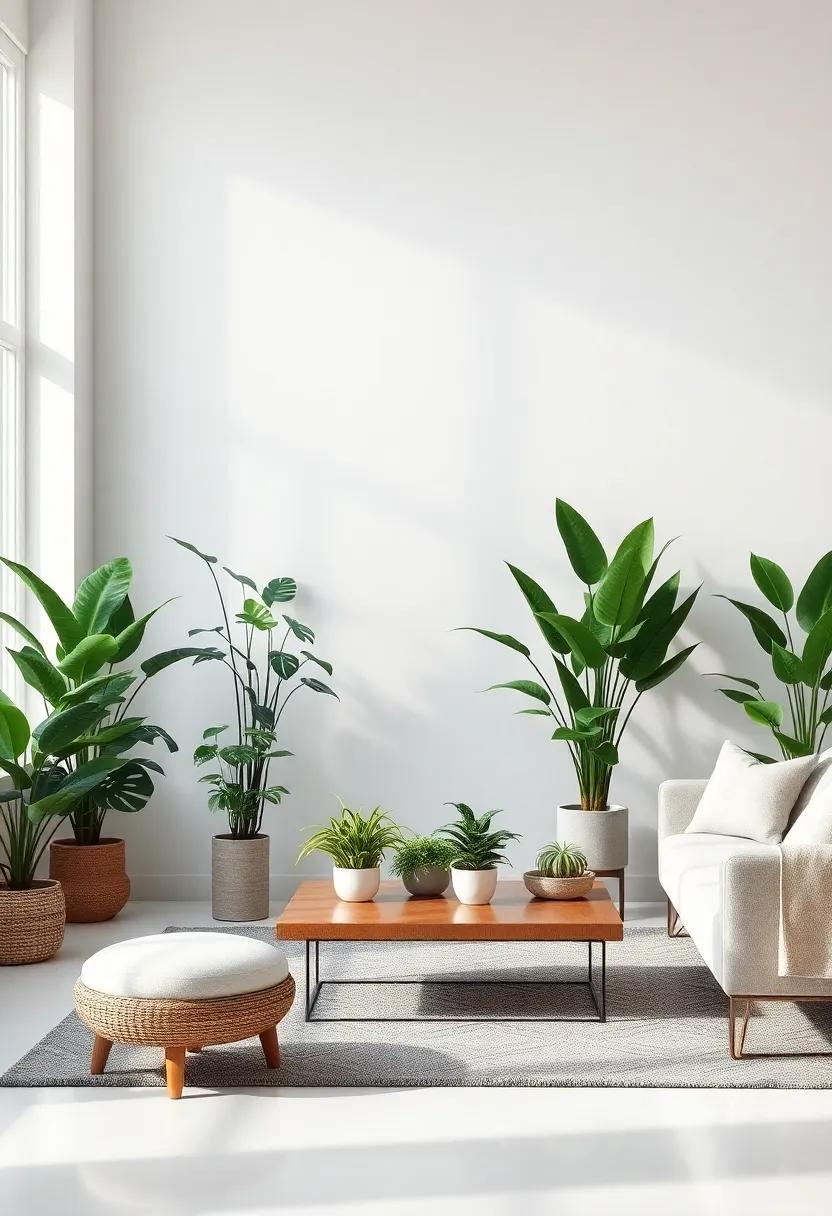
Incorporating statement houseplants into your living room is an excellent way to create a vibrant focal point that draws the eye and energizes the space. Choose larger varieties such as the Monstera deliciosa or Fiddle Leaf Fig that not only add height but also texture with their dramatic leaves. Position these standout plants in decorative pots and place them strategically near natural light sources, such as windows or balconies, to accentuate their beauty. Consider using plant stands for variation in height, allowing multiple plants to shine together. Layering smaller plants around these larger specimens can create depth and visual interest.
Another effective approach is to curate a collection of unique plants that complement your décor. A mix of snake plants, zebrina, and pothos can create a lush, tropical feel that enhances biophilia in your living room. Use a selection of planters with different textures and colors to tie the greenery into the overall aesthetic. Pairing plants with natural elements such as wood, stone, or woven baskets will not only amplify their presence but also contribute to the organic charm of the room. Here’s a rapid overview of some impactful houseplants to consider:
| Plant Name | characteristics | Light Requirements |
|---|---|---|
| Monstera Deliciosa | Large, split leaves | Bright, indirect light |
| Pothos | Trailing vines, easy to grow | Low to bright indirect light |
| Fiddle Leaf Fig | Large, glossy leaves | Bright, filtered light |
| Snake plant | Upright, sword-like leaves | Low to bright light |
Layering Plants for Depth and Texture in your Living room
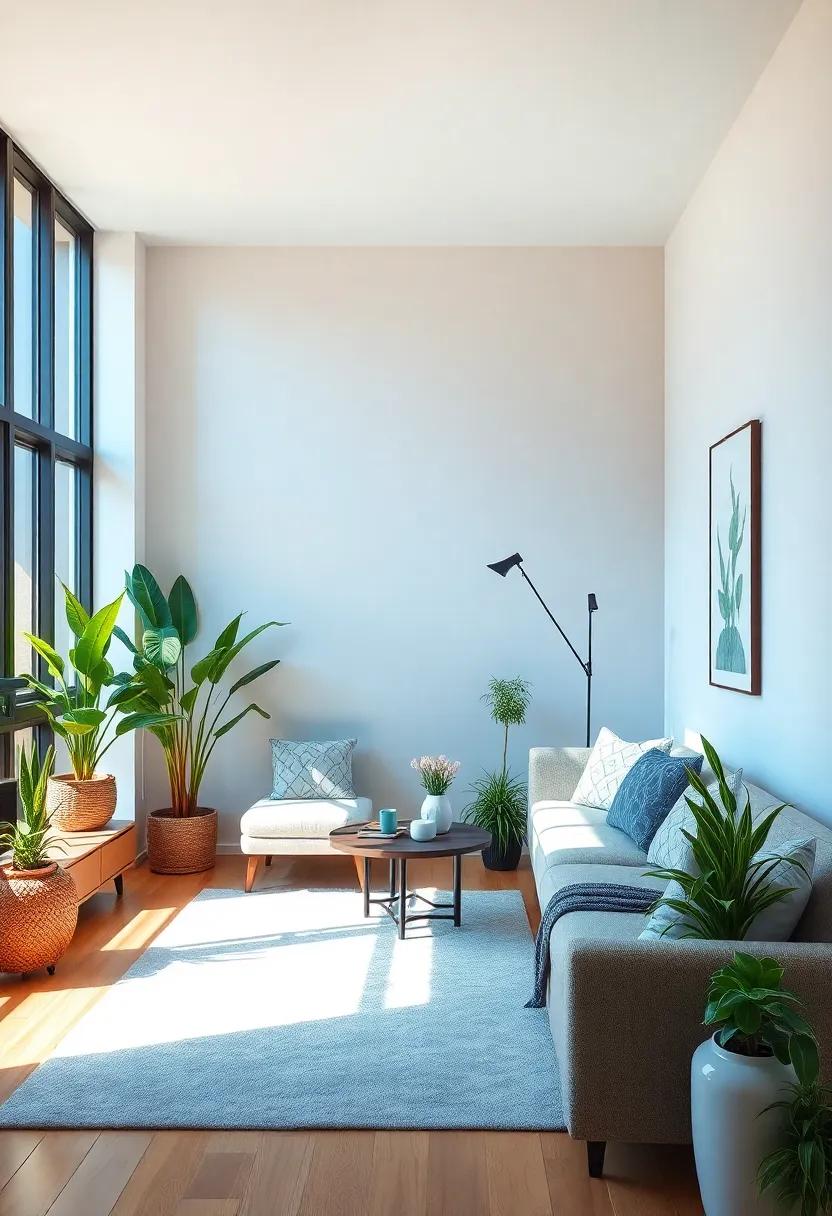
To create visual interest in your living room, consider layering plants of varying heights and textures. Start with large statement plants such as a Fiddle leaf Fig or Rubber Plant, positioned in corners or beside furniture to establish a backdrop. Next, add medium-sized plants like a Snake Plant or ZZ Plant, which can punctuate spaces on side tables or low shelves, offering a balance to the larger specimens. introduce smaller plants such as Pothos, Spider Plants, or succulents, which can cascade from hanging planters or add a dash of color to window sills. The interplay of these different plant sizes creates a captivating multi-dimensional feel that draws the eye throughout the room.
Texture is equally crucial in your selection process. Group together plants with contrasting leaf shapes and textures, such as the waxy leaves of a Peace Lily alongside the feathery fronds of a boston Fern. This will create a rich tapestry of greenery that feels alive and dynamic. Additionally, consider using decorative pots and planters that complement the overall aesthetic of your living room.For instance, a modern matte finish on a pot can enhance the sleek lines of a Monstera, while a rustic ceramic planter may suit the organic vibes of a fern.here’s a handy table to help you visualize some combinations:
| Plant Type | Texture | Ideal Placement |
|---|---|---|
| Fiddle Leaf Fig | Smooth, large leaves | Corner of the room |
| Snake Plant | Vertical, sword-like leaves | On a side table |
| Pothos | Heart-shaped, variegated leaves | Hanging planters |
Incorporating Vertical gardens to Maximize Space and Beauty
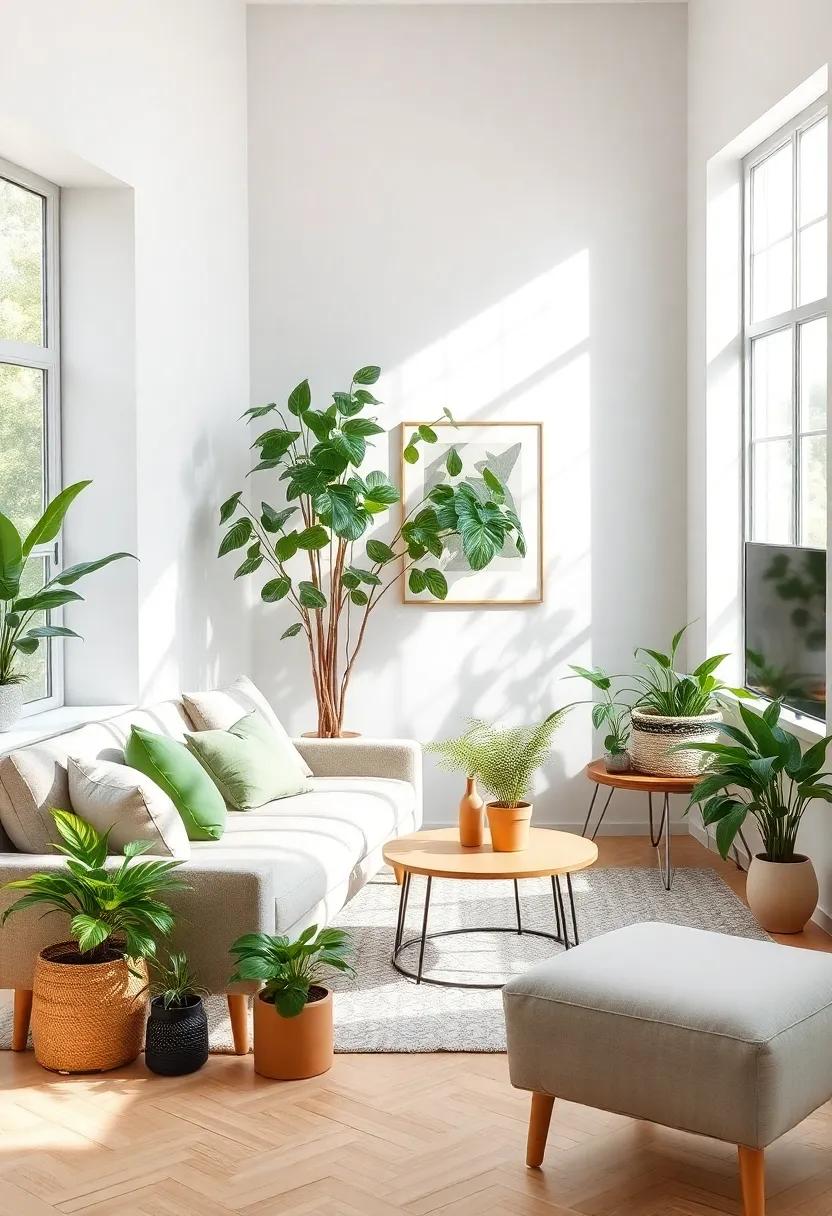
Vertical gardens are an innovative way to infuse life into your living room while conserving precious floor space.These green walls can transform any bland area into a vibrant oasis, allowing you to indulge in the beauty of nature without the need for extensive landscaping. By choosing a variety of plants with different textures and colors, you can create a stunning visual display that complements your interior decor. Consider the following benefits of vertical gardens:
- Space-saving design: Perfect for smaller rooms, maximizing vertical space.
- Improved air quality: Plants naturally filter indoor air pollutants.
- Enhanced aesthetics: A living work of art that evolves with time.
- Customization: Tailor your selection of plants to fit your personal style.
When incorporating vertical gardens, selecting the right materials and plant varieties is crucial for success. Opt for wall-mounted planters or trellis systems that provide adequate drainage and support. Here’s a simple comparison of plant types suitable for vertical gardening:
| Plant Type | Light Requirements | Maintenance Level |
|---|---|---|
| Ferns | Indirect sunlight | Low |
| Succulents | Bright, direct light | Low |
| Vining plants | Partial shade | Medium |
| Herbs | Full sunlight | Medium |
Designing Cozy Nooks with Plants to invite Relaxation
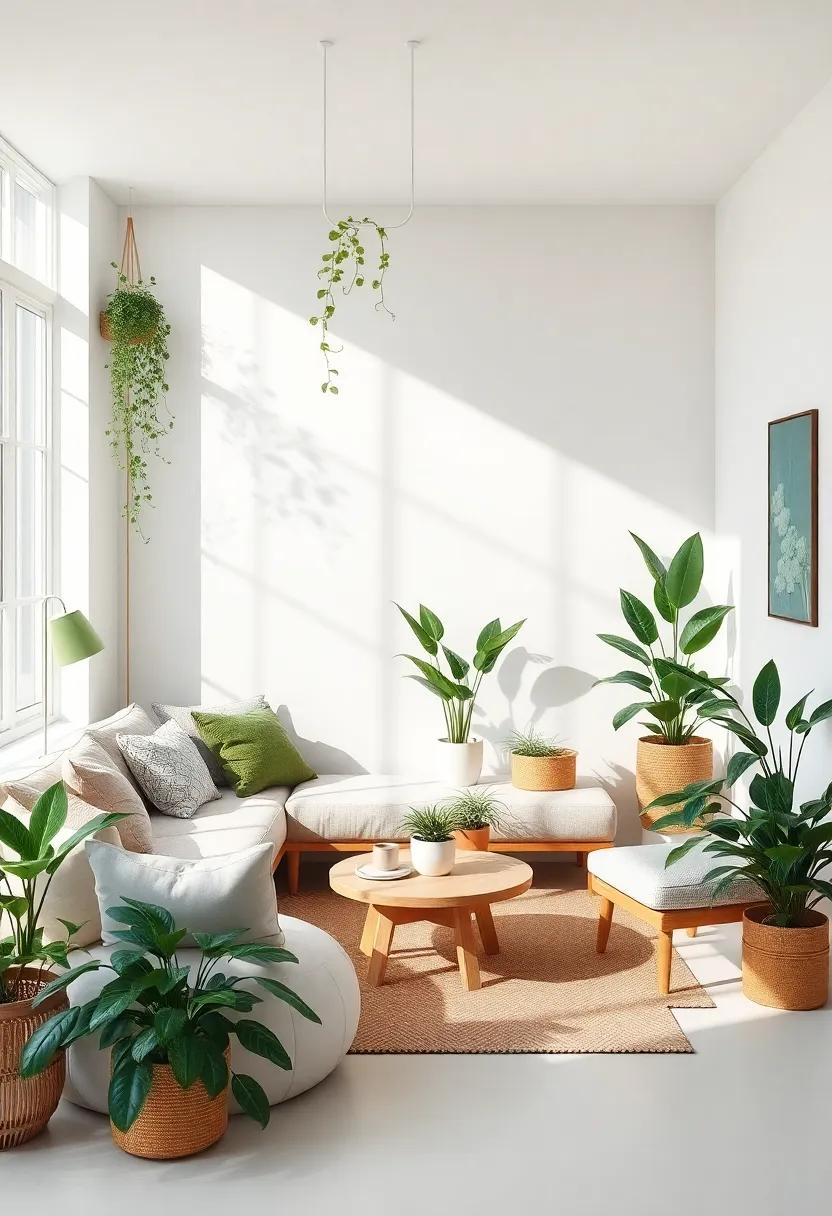
Creating intimate corners in your living room can turn an ordinary space into a serene retreat. Start by selecting a comfortable chair or a plush floor cushion and position it near a window to let the natural light spill in. Surround this cozy spot with a collection of lush green plants that not only enhance the aesthetic but also purify the air, inviting tranquility. Consider using varied heights and textures to create interest, such as tall snake plants, hanging pothos, or succulent arrangements. You can even introduce a small side table for your favorite book or a warm beverage, allowing for extended moments of relaxation amidst the greenery.
To achieve a harmonious blend of nature and comfort, think about incorporating elements that resonate with biophilia. Using natural materials like wooden shelves to display your plants adds warmth, while soft textiles like woven throw blankets can provide an inviting touch. Create a layered affect by placing plants in groups of three or five, mixing in different pot styles—perhaps rustic clay pots alongside sleek ceramic vessels. This combination not only draws the eye but also fosters a sense of peace. Below are some excellent plant choices for your cozy nook:
| Plant | Light Requirement | Care Level |
|---|---|---|
| Peace Lily | Low to Medium | Easy |
| Spider Plant | Bright, Indirect | Very Easy |
| ZZ Plant | Low | Low Maintenance |
| Philodendron | Medium | Easy |
Utilizing Plant Stands to Showcase Your Greenery Creatively
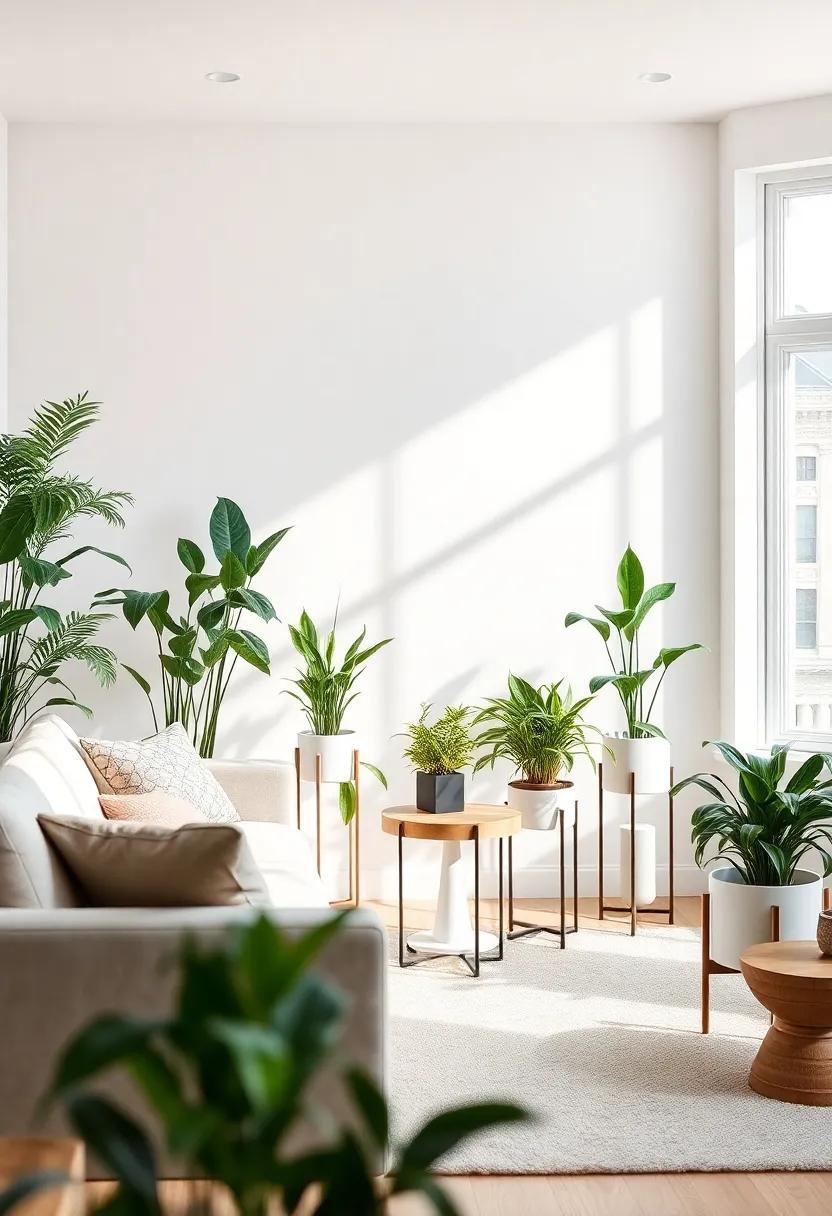
elevating your indoor garden can be achieved effortlessly through the strategic use of plant stands. Variations in height add dimension to your living space, encouraging the eye to travel upward and appreciate the lush greenery you’ve curated. Consider using a mix of materials—like wood, metal, or ceramic—to create an eclectic display that reflects your personal style.Grouping plants in clusters of different heights not only fills empty corners but also draws attention to your favorite specimens. An arrangement could feature a tall fiddle leaf fig on a pedestal stand, surrounded by smaller, trailing plants cascading from lower shelves.
To make the most of your plant stands, don’t shy away from experimenting with color and texture. Incorporating decorative pots that contrast or complement your stands can enhance the overall aesthetic. Furthermore, creating a small theme within your displays can transform a mundane corner into a focal point. Here are a few creative ideas for your plant stand displays:
- Color Harmony: Use pots in varying shades of a single color for a monochromatic look.
- Textural Contrast: Pair smooth, modern pots with rustic, reclaimed wood stands.
- Seasonal touch: Swap out plants or pots to reflect seasonal changes, keeping your decor fresh.
Creating a Dynamic Color Palette with diverse Plant Species
Harnessing the beauty of diverse plant species in your living room can create a dynamic color palette that invigorates the space and enhances your biophilic design. By selecting plants that showcase a variety of leaf shapes, sizes, and colors, you can create layers of interest that engage the senses.Consider integrating the following plants for their unique aesthetic contributions:
- Calathea – Known for its vibrant patterns and deep greens.
- Pothos – Adds trailing vines and variegated leaves for a touch of elegance.
- Succulents – Offers a variety of textures and hues, including soft blues and pinks.
- Snake Plant – Its erect, architectural form provides structure and contrast.
- Fiddle Leaf fig – A statement piece with its large, glossy leaves.
To visualize how these plants can complement each other, consider creating a simple color palette table that showcases the key colors and forms of your selected species. This table will help you coordinate the plants effectively within your living space:
| Plant Name | Color Highlights | Form |
|---|---|---|
| Calathea | Emerald green, maroon | Round, lush |
| Pothos | Green, creamy white | Trailing |
| Succulents | Dusty blue, rosy pink | Compact |
| Snake Plant | Dark green, yellow edges | Upright |
| Fiddle Leaf Fig | Shiny green | Large, broad |
By thoughtfully curating a diverse array of plants, you enhance not only the visual appeal but also the emotional atmosphere of your living room. When the dynamic colors of foliage and form interact harmoniously, the space transforms into an inviting sanctuary that nurtures both well-being and creativity.
Integrating Natural Light to Promote Healthy Plant Growth
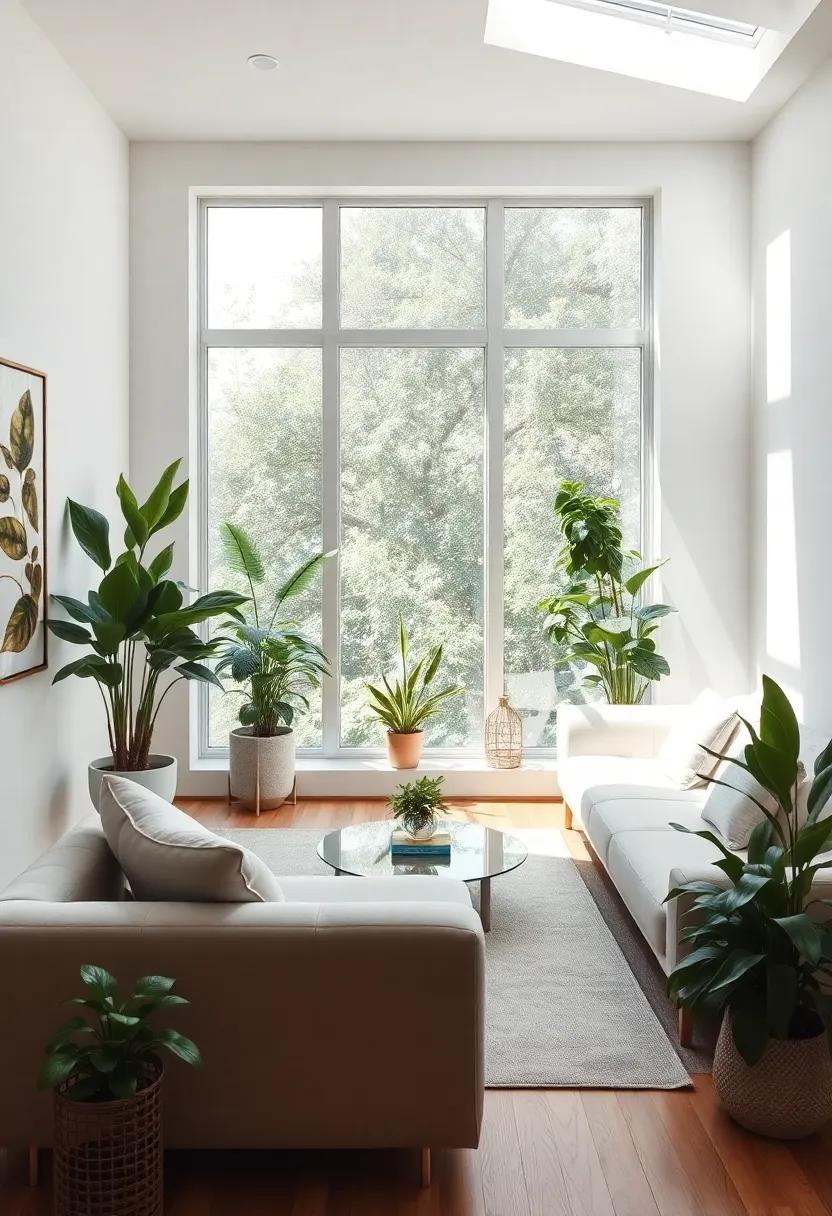
Natural light is the lifeblood of indoor plants, playing a crucial role in their growth and vitality.When designing a living room adorned with greenery, it’s essential to consider how sunlight enters the space. Place your plants near windows that receive bright, indirect light, as most houseplants thrive in these conditions. Use sheer curtains to filter harsh rays while still allowing ample light to penetrate. Positioning plants on windowsills or hanging them in front of sunny windows can also create a captivating display that draws the eye and enhances the room’s aesthetics.
Additionally, understanding the light requirements of individual plants can vastly improve their health. Employ a simple categorization system to ensure each plant receives the right amount of sunlight, which may consist of:
- Low Light: Snake Plant, ZZ Plant
- Medium Light: Pothos, Philodendron
- bright Indirect Light: Spider Plant, Peace Lily
Caring for the light needs of your indoor flora not only promotes their growth but also establishes a biophilic connection that enhances your living environment. By embracing the interplay between natural light and plant health, your living room can become a vibrant oasis that flourishes with life.
Exploring Planters that Complement Your Living Room Decor
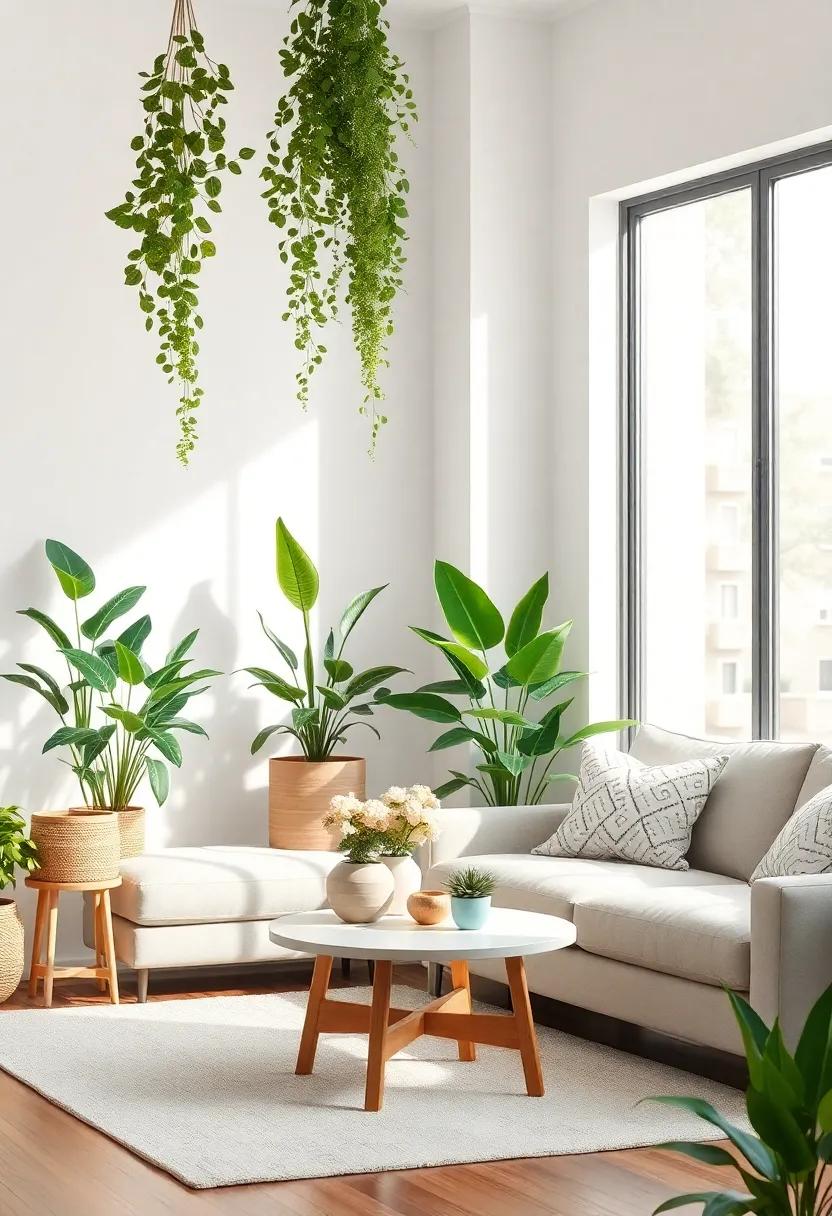
Incorporating planters that harmonize with your living room decor can breathe new life into your space while enhancing the overall aesthetic. Think about the materials and styles that resonate with your existing elements. For a contemporary look, try sleek metal or ceramic planters with clean lines, while rustic wooden or wicker containers work beautifully in more traditional settings. Additionally, consider color and texture; vibrant hues can energize subdued palettes, while neutral tones can seamlessly integrate into any decor. Experimenting with different shapes can add visual interest—choose tall,slender pots for corners and round,wide containers for tabletops.
To achieve a curated aesthetic, you might want to style your plants based on their size and visual impact.Here’s a simple framework to guide your choices:
| Plant Size | Suggested Planters | Placement Ideas |
|---|---|---|
| Small | Succulent pots,Hanging plants | Window sills,Shelves |
| Medium | Statement bowls,Ceramic pots | Coffee tables,Console tables |
| large | Floor planters,Wide earthen pots | Empty corners,By sofas |
Don’t forget the role of lighting in showcasing your indoor greenery! Position your plants where they can catch the light,accentuating their colors and textures. Utilize shelves, ledges, and even wall-mounted planters to maximize space and create a layered effect that draws the eye upward. Adding a touch of nature through well-placed planters not only beautifies your living space but fosters relaxation, encouraging a cohesive and inviting atmosphere throughout your home.
Mixing and Matching Plants for a Vibrant Eclectic Look
Creating a stunning indoor garden requires a thoughtful mix of plant varieties that can bring energy and personality to your living room. To achieve a cohesive yet eclectic look, consider combining plants with varied leaf shapes, colors, and textures. For instance, place fiddle leaf figs next to snake plants and pothos, or integrate air plants suspended in glass terrariums for a touch of whimsy. This vibrant mix not only enhances visual interest but also allows for flexibility in aesthetic choices. When selecting your plants, focus on their growth patterns and height to create layers and depth, maintaining balance throughout the space. An eye-catching grouping will turn any corner into a living sculpture.
Another way to amplify your indoor garden’s aesthetic is by incorporating decorative pots and plant stands that complement your room’s overall style. Choose pots in bold colors to contrast with lush greenery, or select earthy tones for a seamless look that harmonizes with wooden furniture. You can also play with scales; larger plants like rubber trees can be paired with smaller succulents or cacti for an engaging visual narrative. To organize your planting in a way that adds dimension, consider a few strategically placed floating shelves or plant ladders for vertical interest. Ultimately, the key to a homely, vibrant environment lies in the synergy between the plants and their surrounding decor.
| Plant Type | Height | Light Needs |
|---|---|---|
| Fiddle Leaf Fig | 3-10 ft | Bright, indirect |
| Snake Plant | 1-4 ft | low to bright, indirect |
| Pothos | 1-3 ft | Low to bright, indirect |
| Air Plant | 6-12 in | Bright, indirect |
Setting the Mood with Biophilic Elements and Ambient Lighting
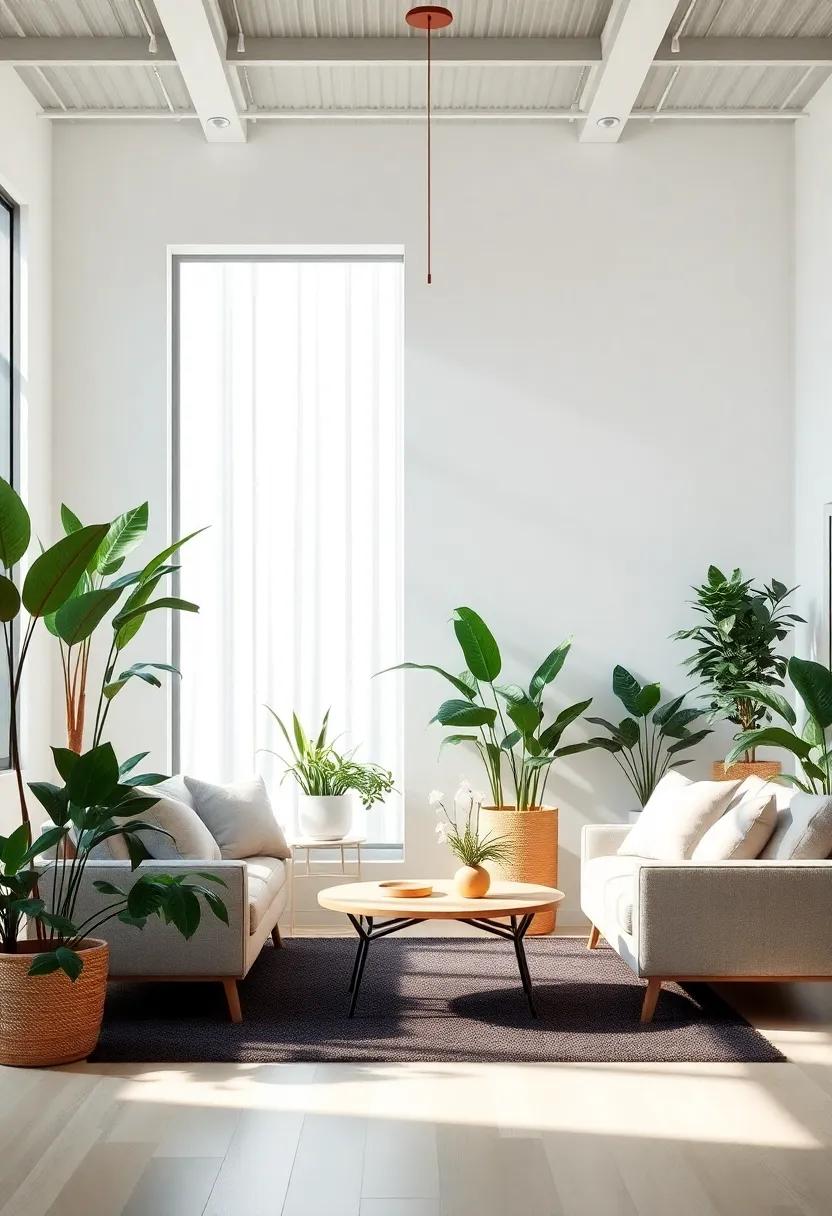
Incorporating biophilic elements into your living room transforms the space into a tranquil oasis. Indoor plants not only purify the air but also add character and vibrancy. When selecting plants, consider a variety of sizes and textures to create a dynamic arrangement. Here are some appealing options to enhance your decor:
- Pothos – Easy to care for and lush.
- Fiddle Leaf Fig – A sculptural statement plant.
- Snake Plant – Hardy with striking leaves.
- Peace Lily – Stunning flowers that thrive in low light.
Pair your greenery with ambient lighting to cultivate a cozy atmosphere. Soft,warm lights can make your living room feel inviting while highlighting your plants’ beauty. Consider using various light sources, such as table lamps and floor lamps, to create layers and depth. additionally, string lights or LED strips can add a whimsical touch. The combination of these elements not only delights the senses but also fosters a deeper connection to nature in your home.
| Light Type | Effect |
|---|---|
| Warm White LED | Creates a cozy environment |
| String Lights | Adds a playful ambiance |
| Floor lamps | Enhances vertical space |
| Table lamps | Contributes to focused lighting |
Sustainable Choices: Selecting Eco-Friendly Plant Options
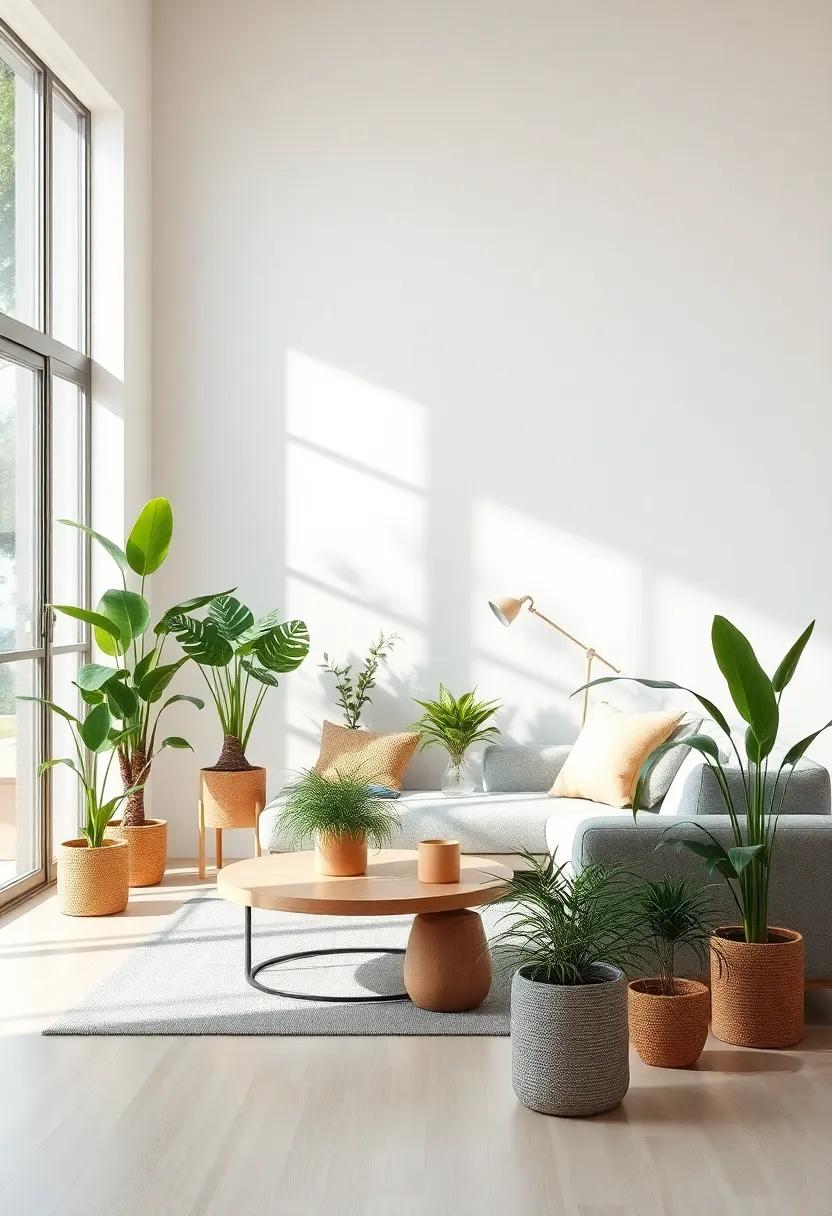
Choosing plants that not only beautify your living space but also promote sustainability is essential for an eco-friendly lifestyle. when selecting indoor plants,consider species that are native to your region,as these plants are already adapted to local conditions and require less water and care.Additionally, look for plants with air-purifying qualities, such as:
- Spider Plant - Known for its ability to filter out indoor pollutants.
- Pothos – A hardy choice that thrives in various light conditions.
- Peace Lily – Offers beautiful blooms while also cleaning the air.
Beyond the plant species, prioritize sourcing your greenery from local nurseries or sustainable growers.This approach not only reduces carbon footprints associated with transportation but also supports local economies. When purchasing plants, look for the following traits:
- Organic certification – Ensures no harmful chemicals were used in cultivation.
- Biodegradable pots – Opt for plants sold in pots made from sustainable materials.
- Propagation-friendly – Choose plants that can easily be propagated, allowing you to grow new ones from cuttings.
Cultivating Aromatic Plants to Enhance Sensory Appeal

Integrating aromatic plants into your living space not only elevates the visual aesthetics but also enriches the sensory experience of your living room. Consider incorporating a few of these fragrant favorites:
- Lavender: Known for its calming scent, it can definitely help reduce stress and promote relaxation.
- Basil: Its fresh, sweet aroma invigorates the space and can even enhance your culinary experience when cooking.
- Mint: The cool,refreshing scent can energize and uplift your mood,making it perfect for social gatherings.
- Jasmine: This delicate flower not only adds beauty but also exudes an exquisite fragrance that fosters romance and tranquility.
Position these plants near windows or in cozy corners where their fragrances can permeate the air freely. creating an aromatic corner can be facilitated by using stylish pots that fit seamlessly into your décor. For those interested in a more structured approach, consider implementing a small herb garden in your living area:
| Plant | Benefits |
|---|---|
| Rosemary | Enhances memory and mental clarity. |
| Sage | Purifies the air and promotes a soothing atmosphere. |
| Thyme | Boosts mood and imparts a warm, earthy aroma. |
With careful selection and arrangement, these plants can turn your living space into a sensory sanctuary, merging the beauty of nature with the comforts of home.Let the invigorating scents transform your daily experience and remind you of the natural world, no matter the season outside.
Utilizing Water Features to bring Tranquility and Life
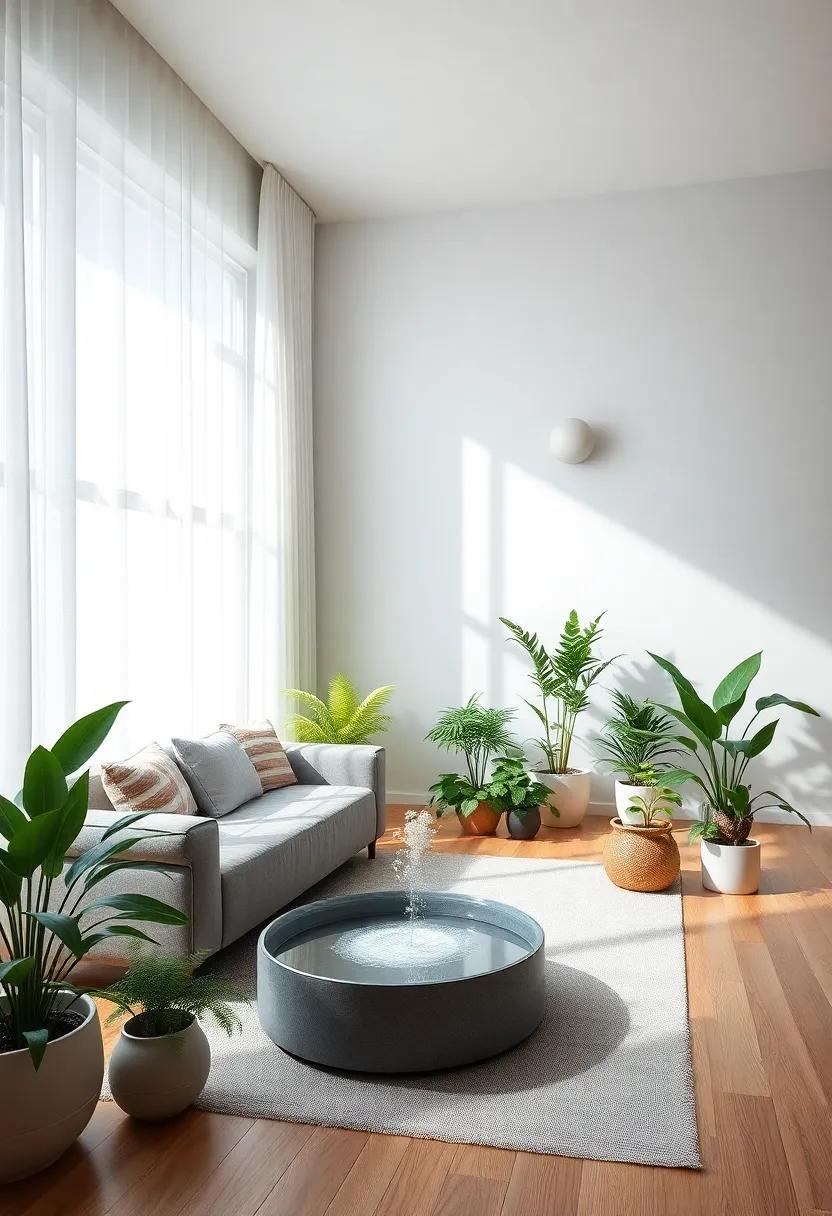
Incorporating water features into your living room design can profoundly enhance the ambiance, introducing a serene element that promotes relaxation and mindfulness. Consider integrating small indoor fountains,which can create a calming sound that mimics the gentle flow of a stream,or opting for aquatic plants in stylish containers to introduce life and vibrancy. The reflective surface of water not only captures light beautifully but also adds depth to your space, making it feel larger and more inviting. A spacious coffee table can showcase a carefully arranged miniature water garden, transforming ordinary decor into a captivating focal point.
To maximize the benefits of these water elements,choose plants that thrive in humid environments,such as peace lilies or bamboo,which can flourish around these features. Furthermore, placing your water elements near natural light sources will ensure they remain healthy, while also maximizing visual appeal. Here’s a simple checklist for selecting and maintaining your indoor water feature:
- Choose the Right Size: Ensure the water feature fits comfortably within your space.
- Monitor Water Levels: Regularly check and refill to maintain a healthy environment.
- Incorporate Lighting: Use soft LED lights to enhance the reflective quality of the water.
- Keep It Clean: Regular maintenance is key to a beautiful and healthy feature.
| Water Feature Type | Best Plants | Maintenance Level |
|---|---|---|
| Wall Fountain | Ferns, Peace Lilies | Moderate |
| Tabletop Fountain | Bamboo, Pothos | Low |
| Aquarium | water Lilies, Anubias | High |
Incorporating Natural Textures to Harmonize with Indoor plants
Creating a seamless connection between indoor plants and your living space can be achieved through the use of natural textures. Consider incorporating elements such as wooden furniture,bamboo accents,or stone decorations to enrich the atmosphere.Bringing in these natural materials not only adds depth to your design but also complements the vibrant greenery of your plants. as an example, a reclaimed wood coffee table can create a stunning contrast against the glossy foliage of your potted ferns or a textured stone vase can enhance the visual appeal of simple blooms. this interplay helps to establish a balanced, harmonious environment.
In addition to furniture, think about the textiles you choose for soft furnishings. Materials like linen, jute, and wool can introduce tactile warmth into your living room. Opt for earthy color palettes that echo the shades found in nature, such as muted greens, warm browns, and soft beiges. Pairing these textiles with greenery not only enhances the aesthetic but also fosters a serene, inviting space. Use area rugs made from natural fibers to ground the room while giving your indoor plants room to shine:
| Natural textures | Complementary Plants |
|---|---|
| Reclaimed wood | Snake Plant |
| Bamboo | Peace lily |
| stone | Succulents |
| Woven Jute | Pothos |
Creating a Seasonal Showcase: Rotating Plants for Freshness
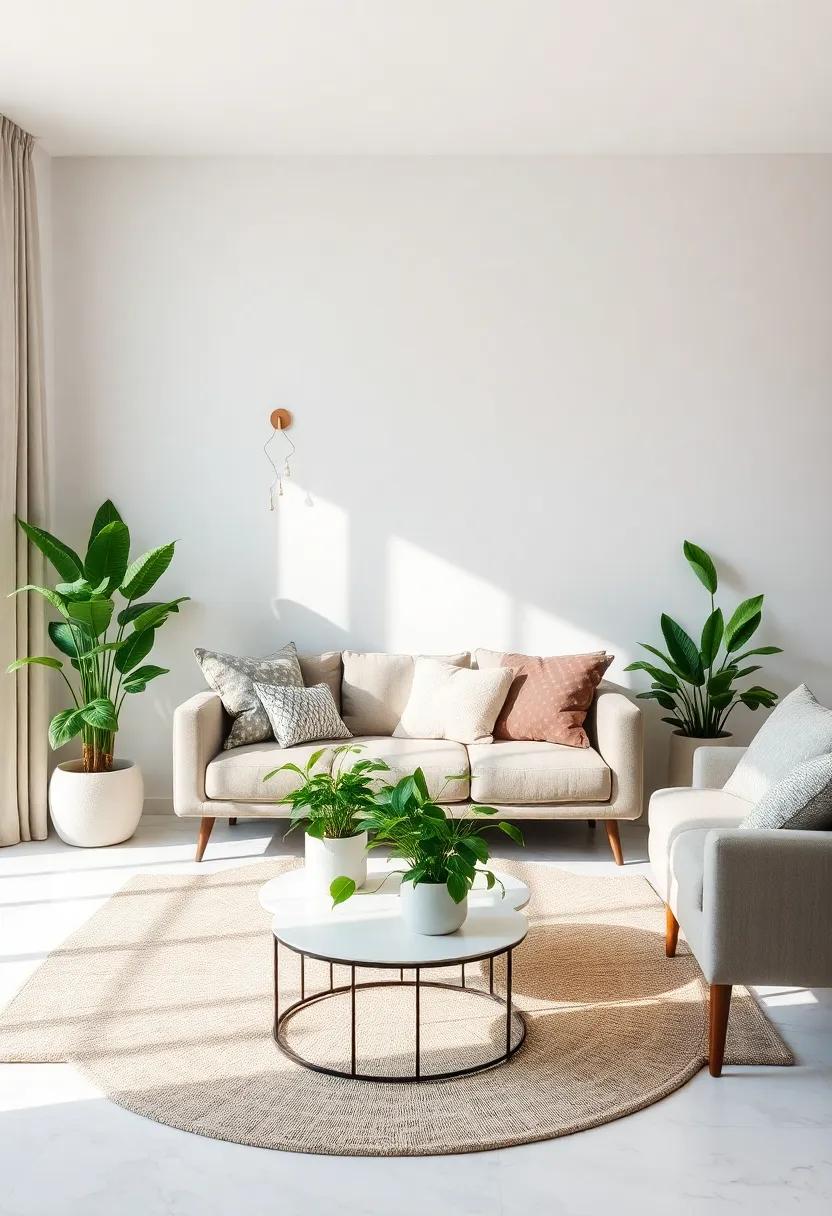
bringing a dynamic flair to your living room can be achieved through the art of seasonal plant rotation. By carefully selecting a variety of indoor plants that align with the changing seasons, you not only enhance your space but also keep your environment feeling fresh and engaging. Consider incorporating a selection that thrives throughout the year, such as:
- Spring: Choose cheerful blooming plants like African violets or begonias.
- Summer: Opt for vibrant options like geraniums or peace lilies that flourish in warmth.
- Autumn: Integrate pothos or fall succulents that lend a cozy touch.
- Winter: Select hardy plants such as snake plants or ZZ plants that thrive in lower light.
to streamline your plant rotation schedule,consider creating a simple table to keep track of your plants and when to swap them out. This grid will serve as a refreshing reminder to change your scenery, maintain plant health, and enjoy the different textures and colors that each season brings:
| Season | Suggested Plants |
|---|---|
| Spring | African violets, Begonias |
| Summer | Geraniums, Peace lilies |
| Autumn | Pothos, Fall succulents |
| Winter | Snake plants, ZZ plants |
Final Thoughts
As we conclude our exploration of biophilia and its transformative power within our living spaces, it becomes clear that the integration of indoor plants is more than just a trend—it’s a commitment to enhancing our well-being and reconnecting with nature. The gentle rustle of leaves, the vibrant palettes of greens, and the soothing presence of life can invigorate our living rooms in ways we never imagined.
By curating your plant collection thoughtfully, you’re not just decorating; you’re cultivating an environment that nurtures the mind and heart. Remember, each plant has its unique story to tell—be it a resilient succulent or a cascading pothos—and as you invite them into your home, you enrich the narrative of your space.
So, whether you’re a seasoned plant parent or just beginning your journey, take the plunge into this green haven. Embrace biophilia, let nature’s beauty flourish around you, and watch how your living room transforms into a sanctuary of peace and vitality. After all, in this harmonious blend of life and design, we find a little more joy in each moment spent at home. Happy planting!
As an Amazon Associate I earn from qualifying purchases.
